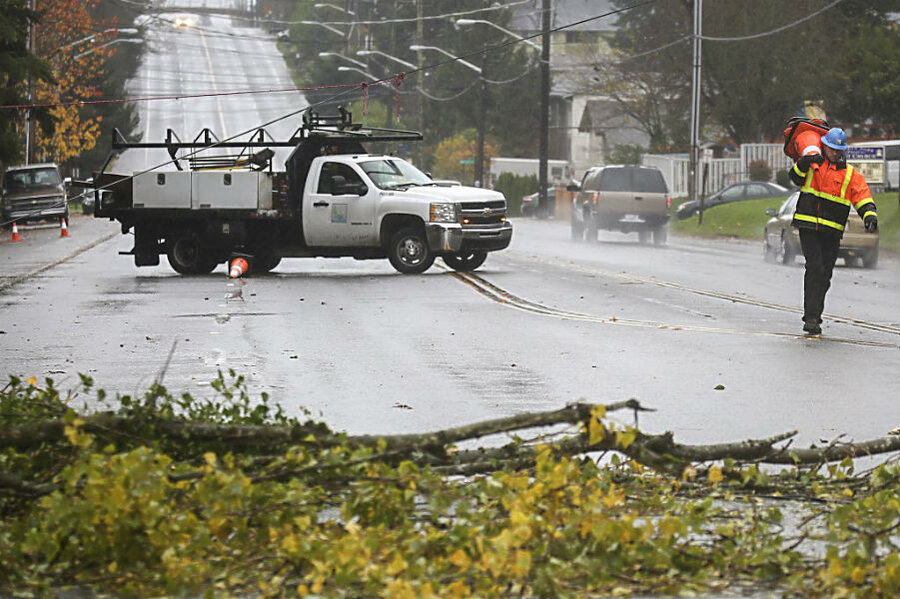Deadly windstorm tears through US Northwest. First signs of El Niño?
Loading...
Dramatic weather struck parts of the western United States Tuesday, with the Seattle-area particularly hard hit. At least three people were killed in Washington state and some 360,000 homes and businesses left without power as a storm walloped the Puget Sound region, bringing down trees and setting off mudslides, according to local authorities.
The storm brought wind gusts that topped 49 miles per hour, leaving roads littered with debris from downed trees and power lines. Coastal areas of Puget Sound region are under flood watches through Wednesday afternoon, the National Weather Service said.
"It's a hell of mess here," said Snohomish County fire chief Merlin Halverson, according the Associated Press.
Falling trees killed three in Washington during the storm. A man in his mid-20s was killed when a tree crushed his car as he was driving near Sultan in Snohomish County. The tree landed on the car's roof directly over the driver's seat, killing him instantly, Mr. Halverson said.
In Spokane, local police said a tree fell on a woman, killing her. A third person was also killed in the same area when a downed tree struck her car, The Seattle Times reports.
Along roads that span the Cascade mountains north of Seattle, a mudslide crossed State Route 20, bringing down trees, while flooding closed parts of US Route 2, the Department of Transportation said.
In Snohomish County, about 150,000 customers were left without power after a "huge windblast," Puget Sound Utility said.
Likewise in Oregon, power was out for thousands of residents in the greater Portland area and a flood watch is in effect for the northern Oregon coast through Wednesday. State officials cautioned residents to avoid the Willamette River through Thursday evening, as a storm surge caused Portland's sewer system to overflow into the river.
Heavy snow was dropped on parts of Colorado, the same storm threatened tornadoes in central and southern states. Two small tornadoes touched ground north of the Dallas-Fort Worth area, according to the NWS. Colorado's primary east-west highway, Interstate 70, was closed due to blizzard conditions on the Eastern Plains. In northwest Kansa up to 15 inches of snow and heavy winds are in the forecast.
The storm, the first in a predicted string to sweep the states, originated in the Gulf of Alaska. It could be a sign of El Niño, an ocean phase that brings warmer waters and, in turn, drop heavy rain to the West in the coming months, Kathy Hoxsie of the NWS told the AP.
This report contains material from the Associated Press and Reuters.








